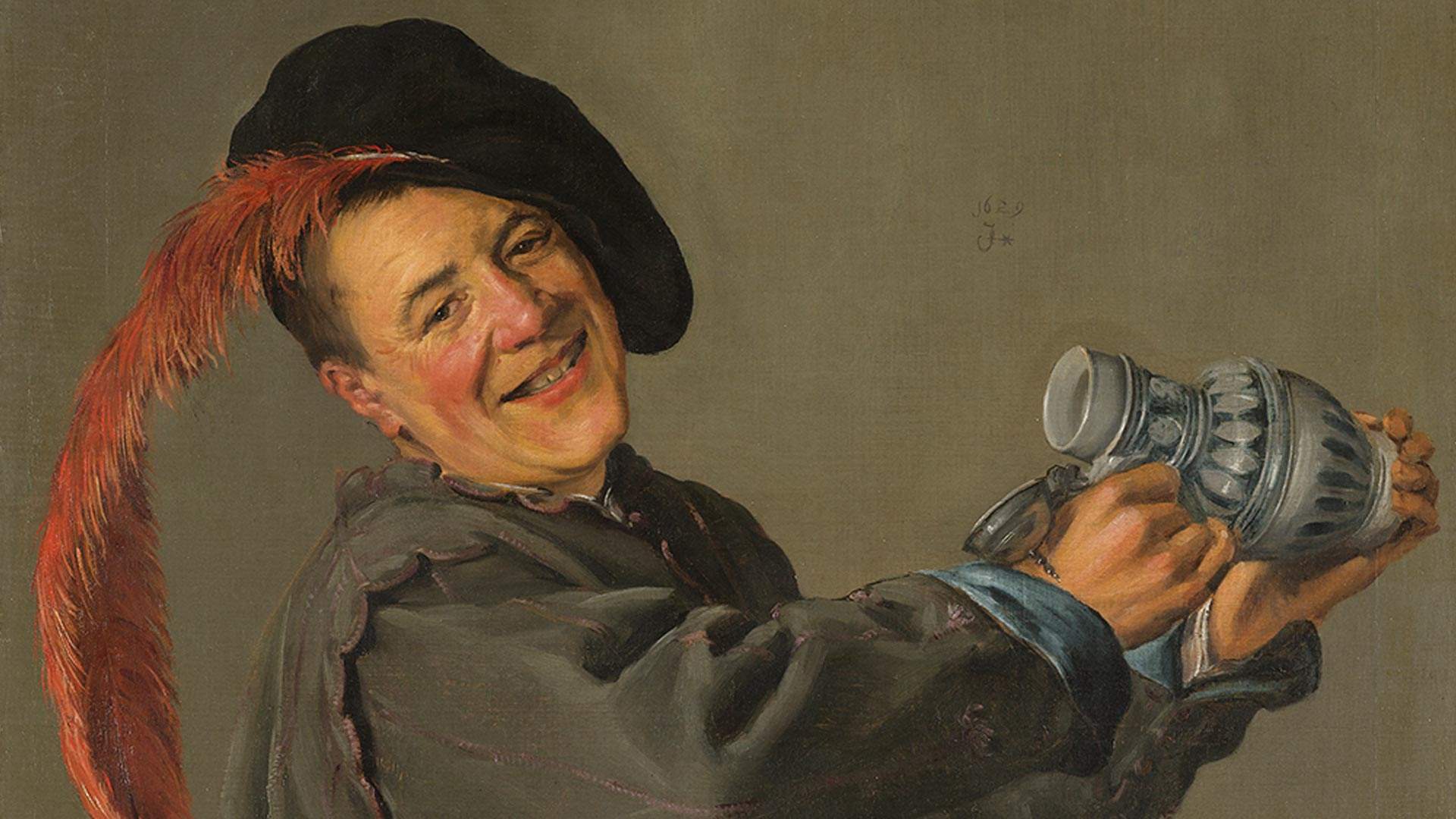Five Artworks Not to Miss at AGNSW's 'Rembrandt and the Dutch Golden Age' Exhibition
Step out of Sydney summer and into 17th century Dutch society.
In partnership with
The sun is out, the cicadas are humming and the beaches are calling – but don't let the summer go by without taking an indoors break to check out Rembrandt and the Dutch Golden Age: Masterpieces from the Rijksmuseum at the Art Gallery of NSW. Until Sunday, February 18, you can gaze at 78 incredible artworks — including a rare Vermeer and an entire room devoted to Rembrandt — by the greatest Dutch painters of the 17th century. From stormy seas to tranquil domestic scenes to intricate studies of flowers and fruit, each work radiates with the abundant artistic energy of an era buzzing with power, wealth and cultural confidence. We spoke to exhibition researcher Josephine Touma to get a glimpse into a seriously unmissable, beautifully arranged exhibition. ![]()
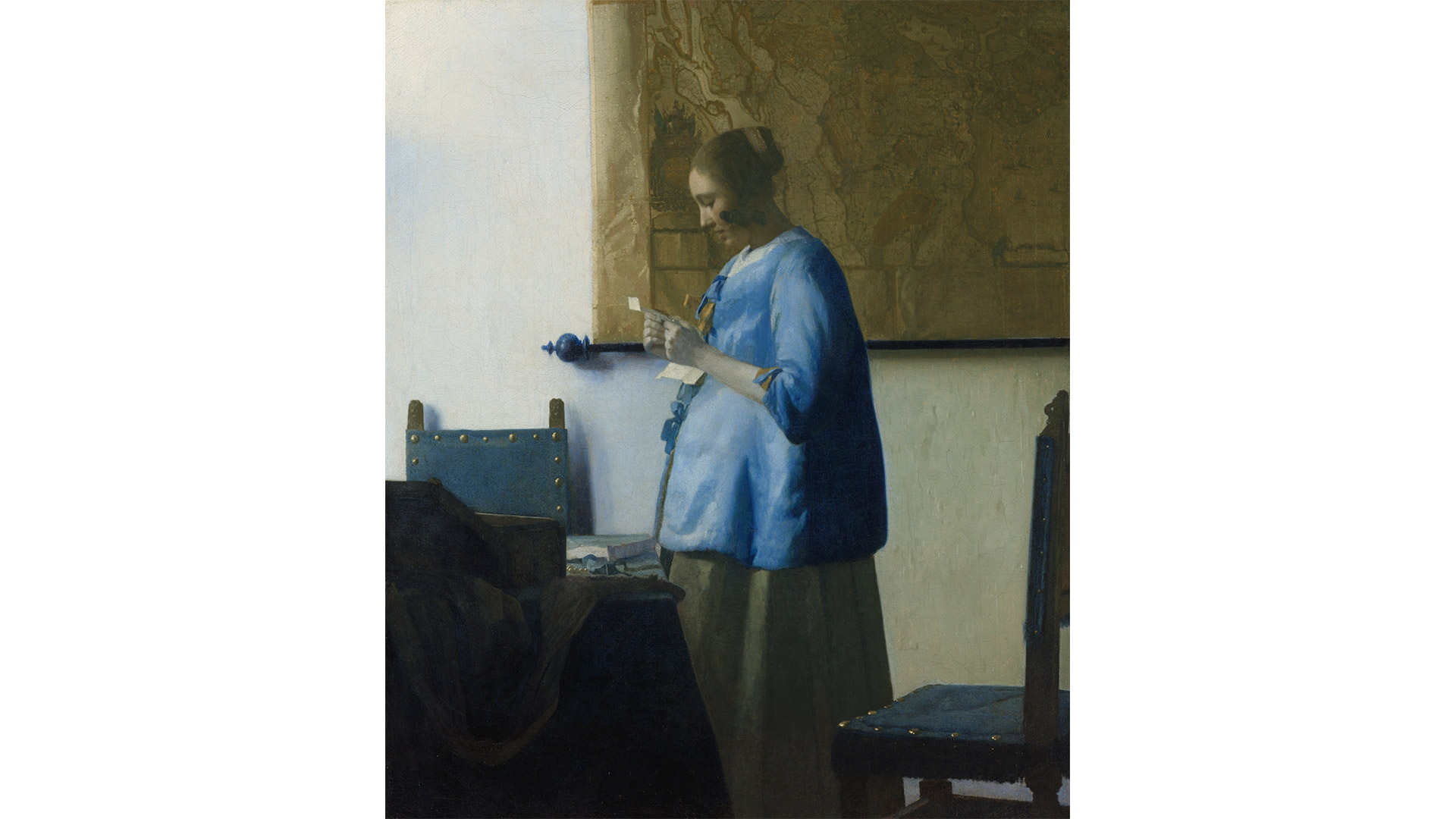
Johannes Vermeer: Woman Reading a Letter, 1663, Rijksmuseum, on loan from the City of Amsterdam (A. van der Hoop Bequest).
JOHANNES VERMEER: WOMAN READING A LETTER (1663)
Vermeer nerds will already know just how exciting it is to have this work in Sydney. Not only is it one of only 35 surviving Vermeer paintings in the entire world, it's also completely enchanting. Typical of the serene domestic scenes Vermeer painted at the height of his powers, the work captures an uneventful domestic moment — a woman at home reading a letter — and, through sublime use of light, colour and atmosphere, elevates it to a thing of extreme beauty. "These are the paintings that he's become most loved for and I think it's because they're very beguiling," says Touma. They also spark curiosity: in this case, the woman's bent head and parted lips create a sense of romantic suspense. "There's a story there but we don't know what it is. Who is the letter from? What's she thinking? What's she feeling? There's a sense of expectation, there's a bit of mystery and there's enough to ignite the viewer's imagination." Fun fact: Van Gogh was apparently a big fan of this work, particularly for the gorgeous ultramarine (what he called 'celestial blue') seen in the woman's bed jacket, a costly pigment Vermeer made from finely ground lapis lazuli stones imported from Afghanistan.![]()
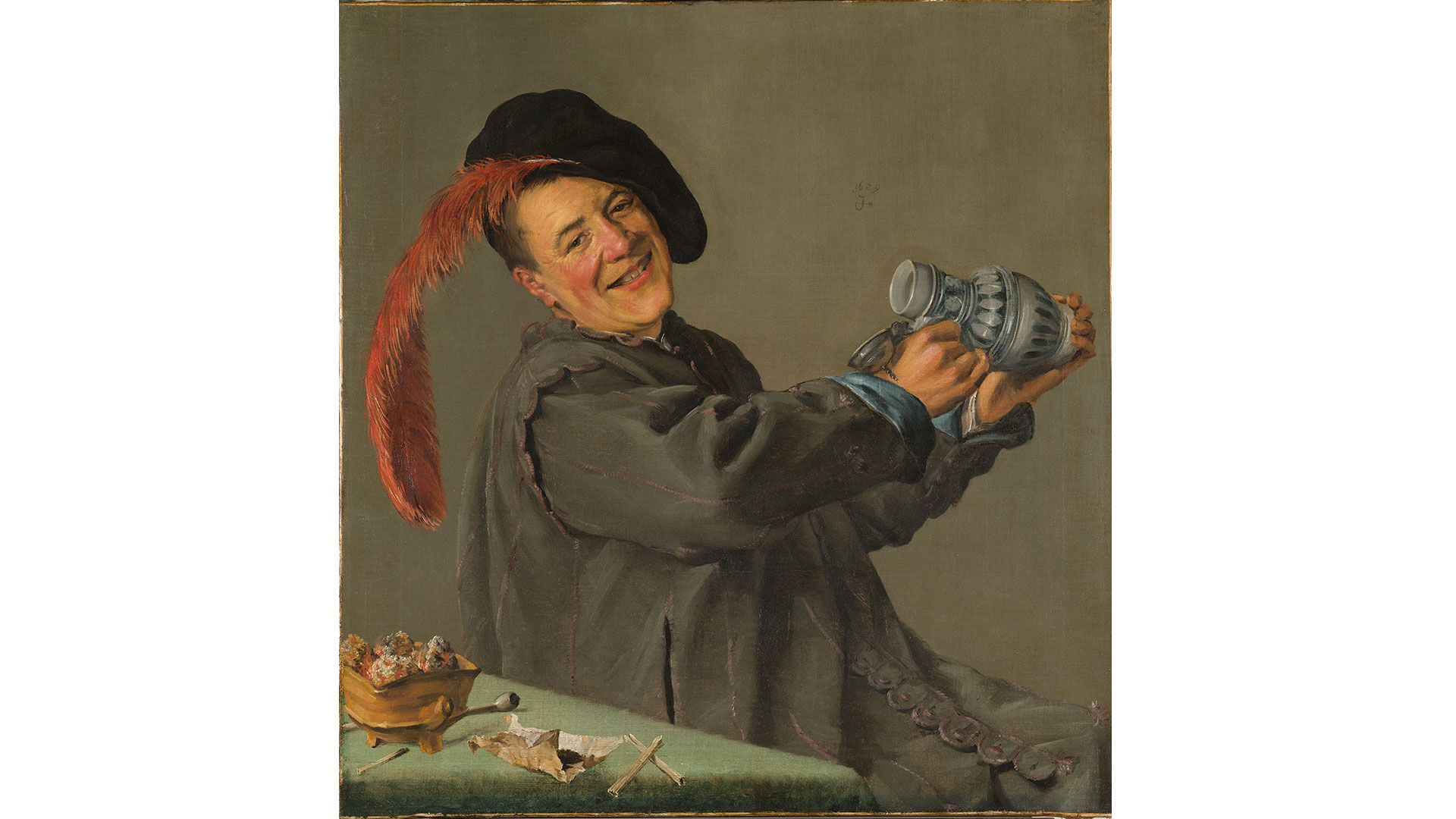
Judith Leyster: The Jolly Drinker, 1629, Rijksmuseum, purchased with the support of the Vereniging Rembrandt.
JUDITH LEYSTER: THE JOLLY DRINKER (1629)
One of just two works by women painters in the exhibition — and by far one of the most entertaining — Leyster's The Jolly Drinker immediately raises a smile. A large painting in a much brighter key than was typical of the period, the work depicts a rosy-cheeked, feather-capped fellow holding up an empty (and we assume, recently full) tankard. It's the kind of character study that was fairly common for the period, with one difference: he actually looks like a real person. "What Leyster brings to that genre is a real sense of the character of an individual. He's got such a distinctive face. He looks like a real person you could know," comments Touma. (True; he bears an uncanny resemblance to this writer's Uncle Martin after a few too many Riojas.) The painting doesn't feel like a warning against drunkenness. Touma notes the gorgeous green sage colour, the infectious sense of joy and abandon within the work. "For all their reputation for being pious and austere, protestant and strict, the Dutch had fun, and they also poked fun at themselves." Art trivia: For a long time, Leyster's works were wrongly attributed to fellow Haarlem painter Frans Hals or her husband Jan Miense Molenaer.
![]()
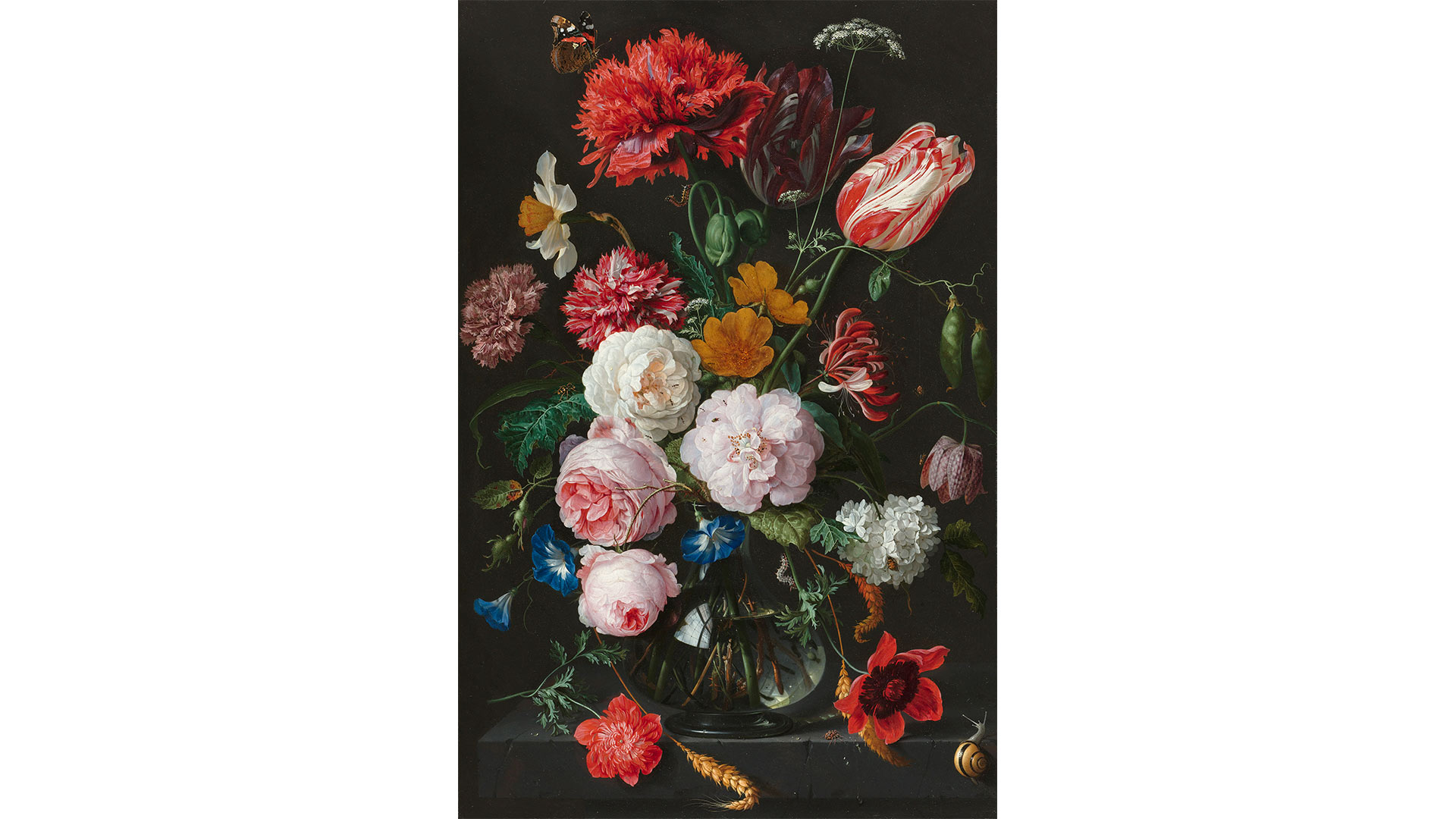
Jan Davidsz de Heem: Still Life With Flowers in a Glass Vase, 1665– 70, Rijksmuseum, on loan from the City of Amsterdam (A van der Hoop Bequest).
JAN DAVIDSZ. DE HEEM: STILL LIFE WITH FLOWERS IN A GLASS VASE (1665-70)
"We deliberately placed this picture as the final painting in the exhibition, because I think it's a real statement of artistic dexterity and ingenuity," says Touma of De Heem's illusionistic Still Life with Flowers in a Glass Vase. Reflecting both the period's fascination with botany and a tendency for artists to show off their refined technique, the work displays De Heem's incredible ability to transform a three-dimensional natural scene into a two-dimensional painting. Particularly impressive is the sense of texture: it really seems like you could touch the cold, smooth glass of the jar, the silkiness of the petals, even the sliminess of the tiny snail in the bottom right corner. For the flower buffs: tulips were imported into the Netherlands from Turkey the century prior and considered an exotic symbol of wealth. In fact, a few decades before De Heem painted this work, tulips were so popular that people went a little crazy. "There's evidence in the archives that says people spent as much on a single bulb as they did on an Amsterdam house," reveals Touma. (Feel better about your $5 avocado yet?) You'll spot two kinds of tulips in the painting - the 'Viceroy' and the 'Semper Augustus,' which at the time were the two most prized varieties.![]()
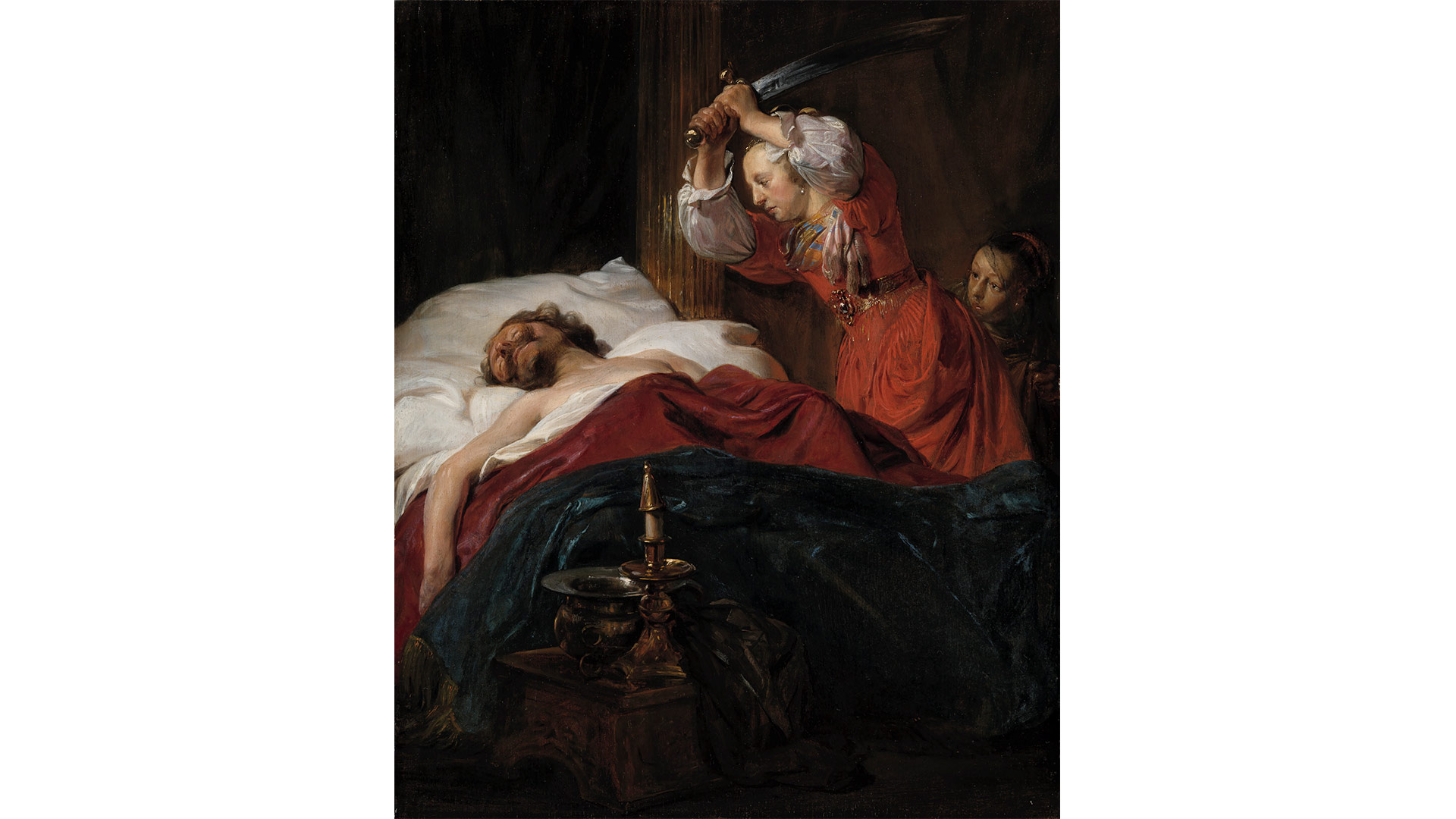
Jan de Bray: Judith and Holofernes, 1659, Rijksmuseum.
JAN DE BRAY : JUDITH AND HOLOFERNES (1659)
Anyone familiar with other painterly interpretations of this biblical subject might be used to seeing a bit more gore (Artemisia Gentileschi's Judith Slaying Holofernes springs to mind). There's still a lot of blood red present, but it's used for the velvet bedding and the colour of Judith's ornate dress, and instead of a grisly scene, de Bray chooses to depict the final moment before all hell breaks loose, resulting in a painting that brims with tension despite it's fairly small scale. Touma notes that, interestingly, de Bray's Holofernes isn't depicted as a massive brute. "There's a vulnerability there in the way he's painted the flesh, he's so vulnerable and pale, his neck open," explains Touma. "He doesn't look like a threatening, rugged figure." Judith in comparison seems incredibly strong and solid. The figure of the maid — in Gentileschi's version, a capable contemporary rolling up her sleeves and helping to pin Holofernes down – is here a cowering, child-like figure, perhaps serving as a point of empathy for the viewer. Hot tip: look out for the candle in the foreground that's been snuffed out, which Touma suggests may symbolise that Holofernes' life is due for a similar fate. "It's a bit obvious town but he's a Dutch painter, he loves symbolism!"![]()
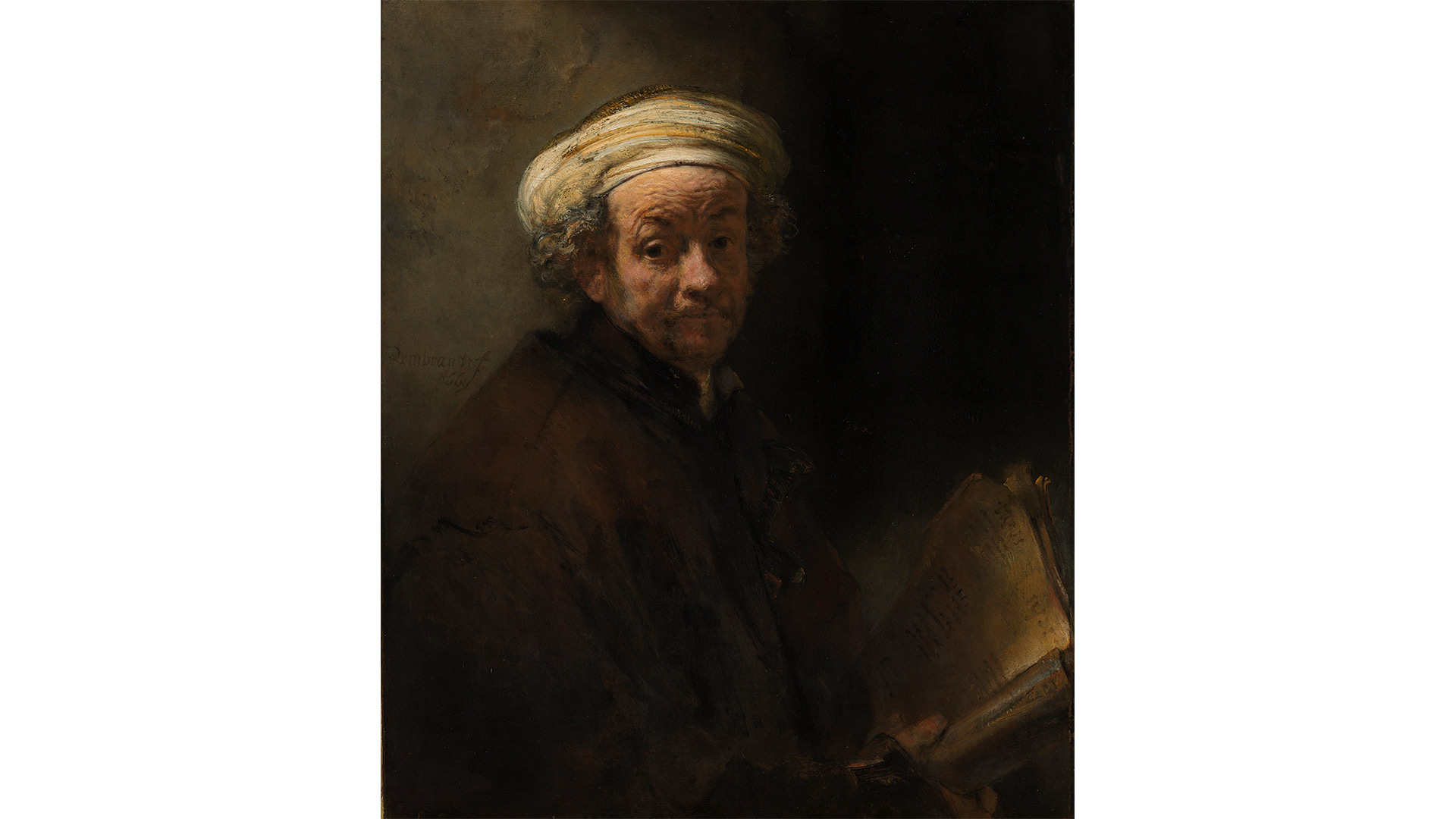
Rembrandt Harmensz van Rijn: Self-Portrait as the Apostle Paul, 1661, Rijksmuseum, de Bruijn-van der Leeuw Bequest, Muri, Switzerland.
REMBRANDT HARMENSZ. VAN RIJN: SELF-PORTRAIT AS THE APOSTLE PAUL (1661)
Last but certainly not least, the iconic Self-Portrait as the Apostle Paul by Rembrandt. Hailed as one of the greatest minds in the history of art, Rembrandt worked consistently throughout a long career and produced over 40 self-portraits (not a vanity thing, self-portraits meant both a constantly available sitter and a chance to return to the same subject with endless innovation and experimentation) including this one, painted eight years before his death aged 63. See it with a mate or two, and odds are you'll all read something different in the complex, ambiguous facial expression. "Everyone who stands in front of a Rembrandt self portrait reads a different emotion," says Touma, for whom it is a painting about "resignation, wisdom and pathos." Created later in life after the death of his first wife and many financial losses, the work stands in stark contrast to an early etched self-portrait completed in his 20s that you'll find in the opposite corner of the room. Comparing the two is revealing. "You can see the progression from a young, cocky, ambitious artist in this haughty self portrait to this later one where he's feeling perhaps a bit more brittle, but experienced," says Touma. "If anyone embraced the signs of ageing and the wisdom of old age, it was Rembrandt."
![]()
Rembrandt and the Dutch Golden Age: Masterpieces from the Rijksmuseum runs until February 18 as part of the Sydney International Art Series 2017–2018.
